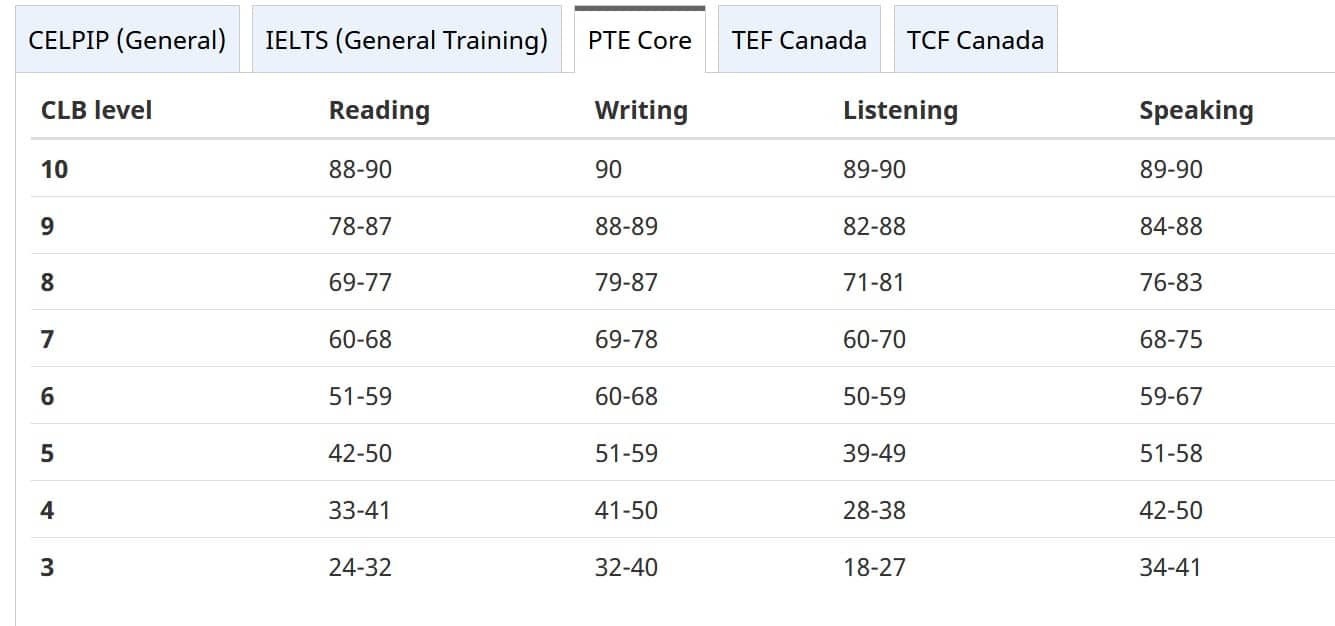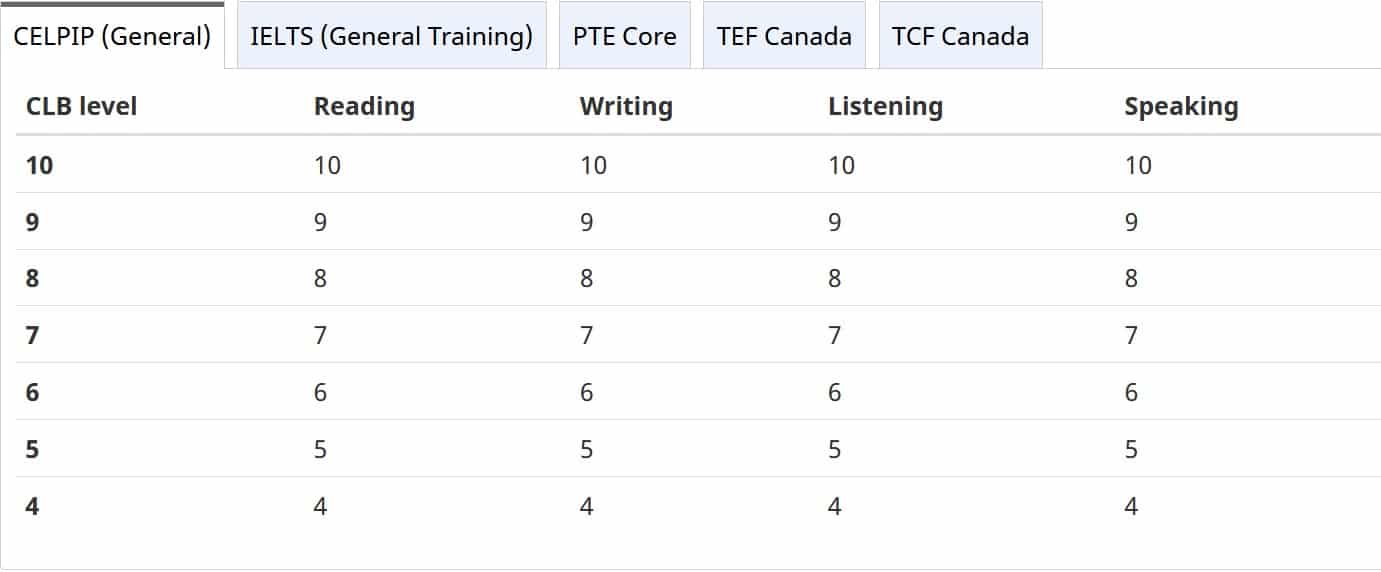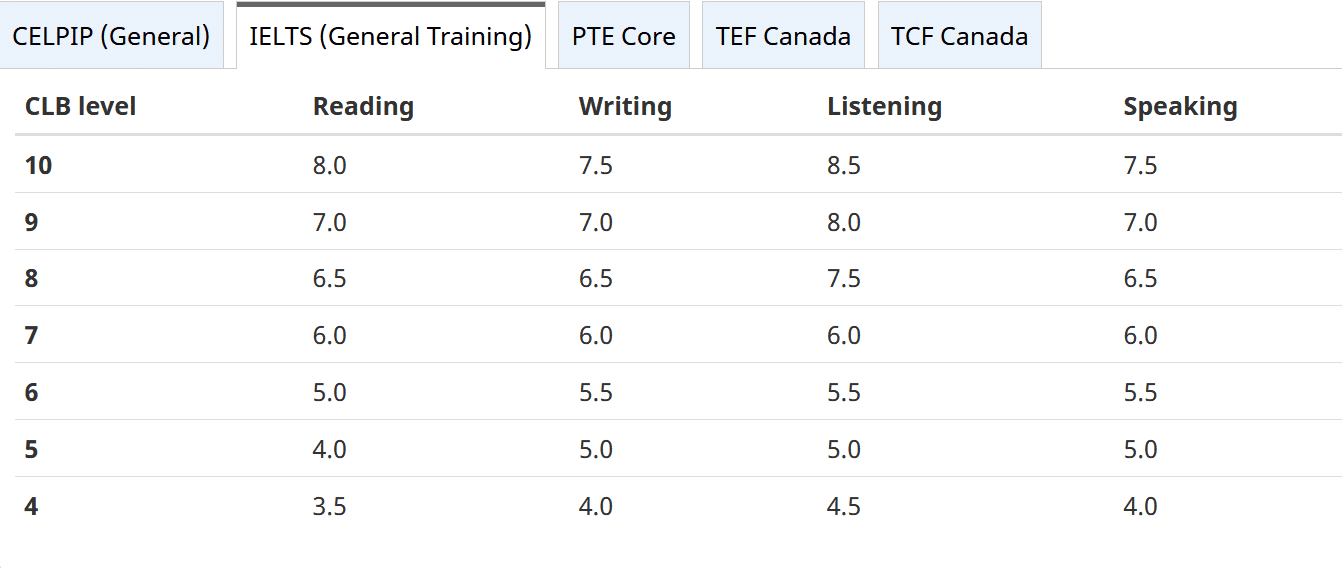Comparing the PTE Core to other IRCC accepted language tests
On January 30, IRCC announced that it is now accepting the Pearson Test of English (PTE) Core for all immigration programs that require a language test, except for the Student Direct Stream.
The PTE Core is the third option for an English language test that candidates can take for their permanent residency application. The other two are the CELPIP General Test (English) and the IELTS General Training (English).
There are also two tests that candidates can use to obtain their Canadian Language Benchmark (CLB) score in French. These are the TEF Canada: Test d’évaluation de français and the TCF Canada : Test de connaissance du français.
Get a Free Express Entry Assessment
All accepted language tests use a different scoring system that generates an equivalent score to the CLB.
What is the Canadian Language Benchmark?
The CLB is a language test that Immigration Refugees and Citizenship Canada (IRCC) uses to evaluate the language abilities of candidates in skilled worker immigration programs. This includes those managed by Express Entry, the Provincial Nominee Program (PNP) and other skilled worker programs such as the Atlantic Immigration Program (AIP).
A CLB score is evaluated through a candidate’s reading, writing, listening, and speaking abilities in English or French. The minimum CLB score a candidate needs to become eligible for immigration to Canada differs between programs.
How do the three English language tests compare?
PTE Core
The newly accepted Pearson Test of English (Core) contains three core modules: speaking and writing, reading, and listening and is marked entirely by scoring technology, meaning there is no interaction with a human examiner.
Tests are scored on a scale of 0-90, with 90 being the highest possible score. A CLB 7 corresponds to a PTE score in the range of 60-68 for reading, 69-78 for writing, 60-70 in listening, and 68-75 in speaking.

How PTE (Core) scores compare to CLB scores
The test takes approximately two hours to complete and is done on a computer in more than 475 locations globally. It costs approximately CAD 340.
CELPIP
The Canadian English Language Proficiency Index Program (CELPIP) gives scores in four categories that align numerically with IRCC’s CLB benchmark levels, making score conversion straightforward.

How CELPIP scores compare to CLB scores
The test takes approximately three hours to complete and generally costs CAD 300. There are testing centers in 23 countries globally.
IELTS
The International English Language Testing System (IELTS) tests candidates in the four abilities needed to get a CLB score.
Results are given by what is known as ‘bands’ across the four abilities, with an overall band score that represents the average score. The scores in each of the four abilities have a corresponding CLB. Candidates seeking CLB 7 must have a minimum IELTS score of 6 in all four categories.

How IELTS scores compare to CLB scores
IELTS tests take approximately two hours and 45 minutes to complete, and the test is done in one day. Like CELPIP, the cost is generally around CAD 300 CAD. Candidates can complete the test on a computer or on paper.
CLB for Express Entry
Three economic immigration programs fall under the Express Entry application management system: The Federal Skilled Worker Program (FSWP), the Federal Skilled Trades Program (FSTP), and the Canadian Experience Class (CEC). Canada is expecting to admit 110,770 Express Entry candidates in 2024 and this will rise to 117,500 in both 2025 and 2026.
Candidates in all three programs require a minimum CLB score to be eligible for Express Entry, but it is slightly different for each program.
Candidates in the FSWP must have a minimum CLB of 7 in each of the four categories.
Those in the CEC also require a CLB 7 but only if their occupation falls under a National Occupation Classification (NOC) TEER of 0 or 1. If a CEC candidate’s NOC TEER is 2-3, they must have a minimum CLB of 5.
Candidates applying for Express Entry through the FSTP require a minimum CLB level of 5 for speaking and listening, and a level 4 for reading and writing.
- Do you need Canadian immigration assistance? Contact the Contact Cohen Immigration Law firm by completing our form
- Send us your feedback or your non-legal assistance questions by emailing us at media@canadavisa.com







